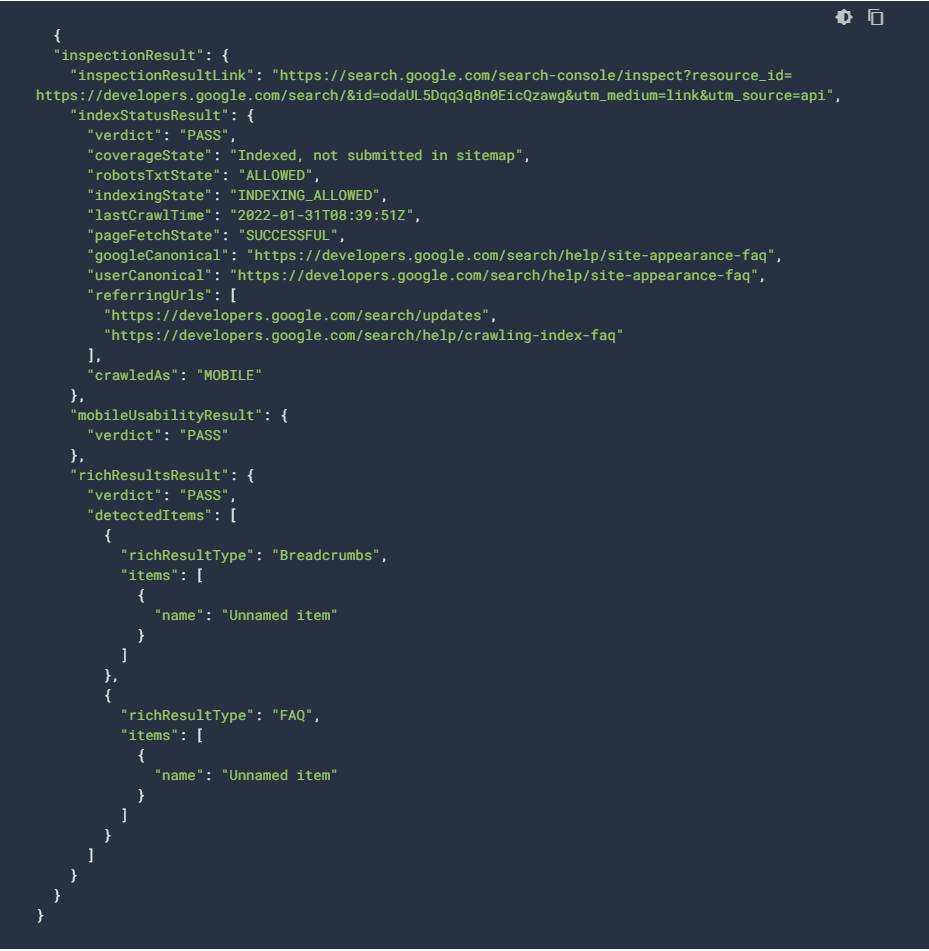Google launches the Search Console URL Inspection API
A new tool designed for developers and SEOs, who can debug and optimize the pages of their sites using the official data of the Search Console integrating them into their favorite analytics tools: This is how Google presents the launch of the Search Console URL Inspection API, which precisely allow programmatic access to data at the URL level for properties managed in GSC.
Search Console URL Inspection APIs, what they are and how they work
Search Console APIs are a way to access data outside of Search Console, via external applications and products, and already allow you to create custom solutions to view, add or remove properties and sitemaps and to perform advanced queries on search performance data.
Thanks to the API Search Console URL Inspection, made official a few days ago by an article by Daniel Waisberg and a tweet by @googlesearchc, we can now access programmatically the data and reports generated by the tool with the same name, also through external apps and softwares (and even Seozoom will soon be able to integrate this information).
Through APIs – which stands for Application Programming Interface, basically a bridge between two software programs to allow dialogue – we can check the information related to indexing status, the multimedia results and the usability on mobile devices of any URL of which we verified the access in Google Search Console also outside of this tool.
How to use APIs for the Search Console URL Inspection tool
As clarified by the post, to use the API you must refer to the method: index.inspect, which provides to use as parameters of the request the URL we want to check and the URL of the property as defined in Search Console, inserted with gRPC transcoding syntax.
The answer includes the results of the analysis containing information from Search Console, starting from the indexed or indexable status of the URL provided: it is important to note that, at the moment, the API analyze the status of the page scanned with the inspector, and not the “live” status, and thus allow you to verify the status of the version in the Google index but not to test the indexability of an active URL.
Still on the subject of warnings, there is no unlimited use of APIs, which currently provide only 2,000 queries per day and 600 queries per minute (quantities, however, sufficient to meet the needs of small and medium-sized sites, but which could make it impossible to scan all Urls daily for a site of thousands of pages).
After making the API call, we get a response with all the relevant results or an error message if the request fails; if the response lacks a specific analysis result, it means that the analysis was not available for the controlled URL.
This image is an example of the response we can receive from APIs.
The usefulness of APIs in Search Console
These new APIs offer an additional way to track the progress of a website’s SEO and to help identify problems and find solutions.
According to Google – which says that it has consulted various SEO and publishers to identify possible ways of using the data provided through the Search Console URL Inspection API – there are two major areas of application:
- SEO tools and agencies can provide continuous monitoring for important pages and individual page debugging options. For example, we can check if there are differences between the canonicals declared by the user and those selected by Google or debug problems related to structured data from a group of pages.
- CMS and plugin developers can add page-level insights or templates and continuous controls to existing pages. For example, ensure the monitoring of changes over time for key pages to diagnose problems and help prioritize corrections.
Anyway, it was a long time that the SEO community had been waiting for Google’s Apis to be integrated into third-party platforms – promises even some time ago from the company’s public voices – and now you can actually add URL control tool information to our CMS, internal tools or dashboards and third-party tools.
It is not a perfect tool yet – it lacks live status, as mentioned, and even the limit of requests can create hassles – but it still offers real first-hand data, directly from Google, which can help in the process of improving our project.


